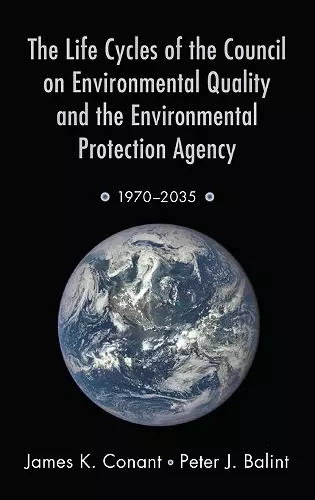The Life Cycles of the Council on Environmental Quality and the Environmental Protection Agency
1970 - 2035
Peter J Balint author James K Conant author
Format:Hardback
Publisher:Oxford University Press Inc
Published:14th Apr '16
Currently unavailable, and unfortunately no date known when it will be back
This hardback is available in another edition too:
- Paperback£27.49(9780190203719)

During the middle and late 1960s, public concern about the environment grew rapidly, as did Congressional interest in addressing environmental problems. Then, in 1970, a dramatic series of bipartisan actions were taken to expand the national government's efforts to control the volume and types of substances that pollute the air, water, and land. In that year, President Richard Nixon signed into law the National Environmental Policy Act, which established for the first time a national policy on the environment and created the Council on Environmental Quality (CEQ). Additionally, President Nixon created, with Congressional support, the Environmental Protection Agency (EPA), and he signed into law the Clean Air Act of 1970, which had overwhelming bipartisan support in Congress. The strong bipartisan consensus on the need to protect environmental and human health began to erode, however, during the middle and late 1970s as other domestic and foreign policy problems rose to the top of the public and legislative agendas. Ronald Reagan's election to the Presidency in 1980 marked a dramatic shift in both environmental policymaking and administration. Over the thirty years that followed Reagan's election, environmental politics and administration became increasingly polarized. In this book, James K. Conant and Peter J. Balint examine the trajectory of environmental policy and administration in the United States by looking at the development of the CEQ and EPA. They look at changes in budgetary and staffing resources over time as well as the role of quality of leadership as key indicators of capacity and vitality. As well, they make correlations between the agencies' fortunes and various social, political, and economic variables. Conant and Balint cautiously predict that both agencies are likely to survive over the next twenty years, but that they will both experience continuing volatility as their life histories unfold.
This book provides an invaluable perspective on the political economy of federal budgeting from the agency point of view. The insights generated by the authors on resource allocation and bureaucratic politics break new ground that hopefully may stimulate much needed new research on the politics of national budgeting. The authors do the great service to students and interested observers alike of demystifying the often obscure and specialized world of budgeting by clearly illustrating demonstrating the broader policy and political consequences of budget choices and routines. * Paul L. Posner, Chairman, National Academy of Public Administration *
ISBN: 9780190203702
Dimensions: 160mm x 236mm x 18mm
Weight: 437g
216 pages